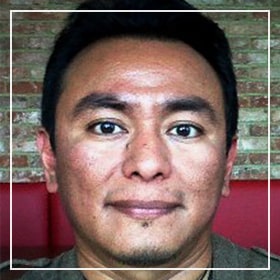Genner Llanes-Ortiz is a social anthropologist and postdoctoral researcher in the Indigeneity in the Contemporary World project based at Royal Holloway University of London, and curatorial assistant and cultural advisor of Ecocentrix – Indigenous Arts, Sustainable Acts. In this interview with Julie Billaud for Allegra, Genner shares his view on the place, meaning and potentials of indigeneity to understand our contemporary world.

ALLEGRA: Before we discuss the exhibition itself could you tell us a bit more about the broader project “Indigeneity in the contemporary world: performance, politics, belonging’?
GENNER: The Indigeneity in the Contemporary World project is a 5 year research programme led by Prof. Helen Gilbert, financed by the European Research Council and based at Royal Holloway University of London. The project team is a multi-disciplinary and international group of women and men who come from drama studies, film studies, literary studies, theatre production, social anthropology, history, and musicology. We have different ethnic and national backgrounds – I am Yucatec Maya from Mexico, and Dylan Robinson is a Stö:lō scholar from Canada, but there are other nationalities, too: Prof. Helen Gilbert is Australian, Dani Phillipson is Canadian, Charlotte Gleghorn is British, Sergio Huarcaya is Peruvian, and Arifani Moyo is Zimbabwean.
The project set out to undertake research on different aspects of performance practice among contemporary Indigenous communities around the world. Performance is here understood in a broad sense – although from my perspective as a Latin American, in a manner difficult to translate to the Anglophone conception. By performance we mean embodied art forms and practices that stand for key aesthetic and political values among Indigenous creators and communities. This includes theatre, dance, film, music playing, avant-garde performance, conceptual artistic interventions, but also public rituals, art festivals, beauty pageants, demonstrations, direct action, among many other practices. Hence, the second line in the name of the project: “Politics, Performance, Belonging”.
ALLEGRA: What kind of questions does this project want to explore?
GENNER: There are a number of questions we have been focusing on. Each one of us has their own particular set, and what they all have in common, I guess, that they aim to understand how Indigenous bodies’ iterative practice and/or spontaneous interventions in the public sphere contribute to challenge racist stereotypes and political disenfranchisement.
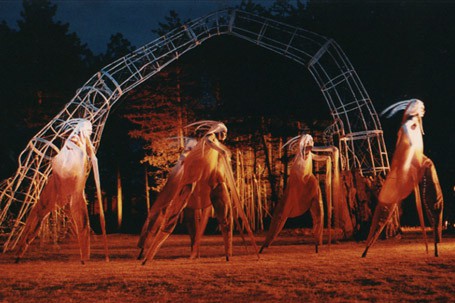
ALLEGRA: In which ways does London provide the ideal setting for exploring such questions?
GENNER: Many of the artists whose work is being presented at the exhibition or who will be personally take part in the interesting programme of interactive events and live performances live in places that were once part of the so-called British Empire, for example, Canada, the United States, Australia, New Zealand, and Samoa. Thus, the Ecocentrix exhibition provides a space for them to “occupy” (artistically as well as politically), to contest cultural misrepresentations and to call attention to the plight of their nations, which are in no small part due to British imperialist expansion. Merely a few examples include the Aboriginal Australian ‘stolen generations’, the loss of territorial and political sovereignty of First Nations in Canada and U.S. Native societies, and the banning of art forms in Aotearoa/New Zealand.
Latin American Indigenous artists and intellectuals do not have the same painful relation with the United Kingdom. This is however an important opportunity for people in London to get to know and understand what happens beyond the confines of the English-speaking world in a way that is not exoticised. It offers the British public a chance to see Indigenous cultural expression in their contemporariness and urgency, and to connect with their vibrancy in a way that, we hope, would be mutually beneficial.
ALLEGRA: Why, in your opinion, does the concept of indigeneity provide an interesting entry point into the transformations of the contemporary world?
GENNER: As an Indigenous person and scholar, I believe that Indigenous cultural orientations offer alternative views and ways of co-creating and re-creating the world, ones that are embedded in both ancient cosmologies and radically contemporary (one even might say, post-modern) practices that focus on survival, healing, recycling, and renaissance.
I do not think that Indigenous communities possess any arcane or exclusive knowledge that could miraculously “save” humanity, but I DO think that our histories and knowledge show meaningful and respectful relations with the land, the plants, the animal world, the forests, the water bodies and the various ways these relations reflect different and equally valuable understandings of humanity. I think that they jointly will assist in envisioning a fairer future.
ALLEGRA: ECOCENTRIX uses indigenous performance and art in order to reflect on broader questions related to ecology, memory, identity, globalisation etc. Why did you choose such an angle?
GENNER: As a research team we tried to be very careful not to further the exoticisation or anthropologisation of Indigenous communities, as if they exclusively belonged in museums or remote corners of the earth. We wanted to show that Indigenous concerns and practices are radically contemporary, and that have as much significance for people in, for instance, rural Yucatan as they do to people in Nairobi, Bangalore, Buenos Aires, Lyon, or Shanghai.
ALLEGRA: The visitor of the exhibition will not leave the OXO tower with a very clear idea of what indigeneity is. In my opinion this is the greatest strength of this exhibition: the fact that the ‘indigenous’ stories that are told here are not the ones people expect. The exhibition deliberately avoids folklore and ‘classic’ anthropological categories. Can you explain the rationale behind such a choice?
My personal take on this issue, as a Maya from Yucatan, is that indigeneity is a way of standing and walking on your own feet in close relation to the land that sustains you.
GENNER: Our explicit goal was not to “define” indigeneity (however possible this enterprise could ever be) but to offer a window into the beauty, creativity and vitality of Indigenous artistic and political pursuits. We didn’t want to stress the traditional but to encourage disruption.
The links have to be established by the audience. The curator, Prof. Helen Gilbert, was very explicit that little or no anthropological information was to be provided in the displays for we wanted to highlight the aesthetic and not the ethnographic value of the work. You would not want to have captions explaining the historical context where Damien Hirst or Tracey Emin did their work; right? Why would you want to have that to understand Indigenous artists like Edgar Heap of Birds, Fiona Foley or David Hernandez Palmar?
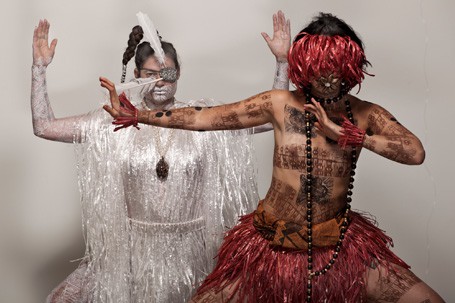
ALLEGRA: Would you agree to say that indigeneity is a way of seeing the world?
GENNER: My personal take on this issue, as a Maya from Yucatan, is that indigeneity is a way of standing and walking on your own feet in close relation to the land that sustains you.
By this I mean that indigeneity is not merely about “seeing” but fundamentally about inhabiting. For those who think that indigeneity is in danger of leading to new forms of ethnic hatred I say that, for me and for many Indigenous artists involved in this exhibition, the right to indigeneity is the right (and duty) to welcome other people into your own country.
ALLEGRA: In his book “Metaphysiques cannibales”, Brazilian anthropologist Viveiros de Castro explains: “What each experience of another culture offers us is an opportunity to experiment with our own culture”. ECOCENTRIX seems to be doing exactly this: to experiment with indigenous ‘cultures’ and to encourage visitors to reflect about their own cultures. Is this correct?
GENNER: Yes, that was the intention, and I appreciate you being able to unpack this notion. This idea was in the back of our heads all the time and I hope other people will see it like you do. There will be other people that would probably still see this exhibition as an “exotic” intervention right in the heart of London, but as I said before this work is about Indigenous people as much as it is about African, European, American and Asian societies.
ALLEGRA: While walking through the exhibition the visitor discovers forgotten stories of indigenous London. Hence the exhibition starts by placing London as the stage where indigeneity is performed, so that from the outset indigeneity is disconnected from the exotic locations to which it is usually associated. Can you tell us about the cultural assemblages on which you wanted to emphasize in this exhibition?
GENNER: We wanted to challenge the idea that Indigenous participation in so-called ‘global conversations’ is something that just began in the 20th century. There have been Indigenous travellers, and diplomats, as well as stolen children and enslaved people since the beginning of ‘contacts’ between the original nations of the Americas and Europeans. The cosmopolitan impulse of Indigenous actors is what we wanted to show. How they deal with universal problems like dealing with the past, and imagining the future. Indigenous artists and communities share concerns with European movements like environmental degradation, food integrity, domestic violence, political mobilization and reconciliation, among other topics that are explored in this exhibition.
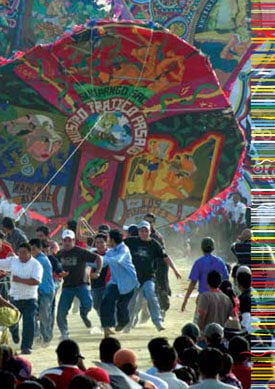
ALLEGRA: In which ways can indigenous cosmologies offer novel or relevant answers to the problems of our contemporary world?
GENNER: This exhibition is a reminder that knowledge does not merely reside in cerebral machinations but that it comes alive in practice, that is, in performance.
Indigenous forms of understanding, and connecting with, the world have been able to survive genocide attempts because they are embodied. I guess the lesson for me is that, if you want to change the world for the better, you must be able not just to imagine it but to perform it, too.
The Ecocentrix exhibition is curated by Professor Helen Gilbert. This international event runs at Bargehouse, Oxo Tower Wharf, SE1 9PH, from 25 October to 10 November 2013. See the exhibition website at www.indigeneity.net/ecocentrix for more details or join us on facebook or twitter. Watch a documentary film on the exhibition here.
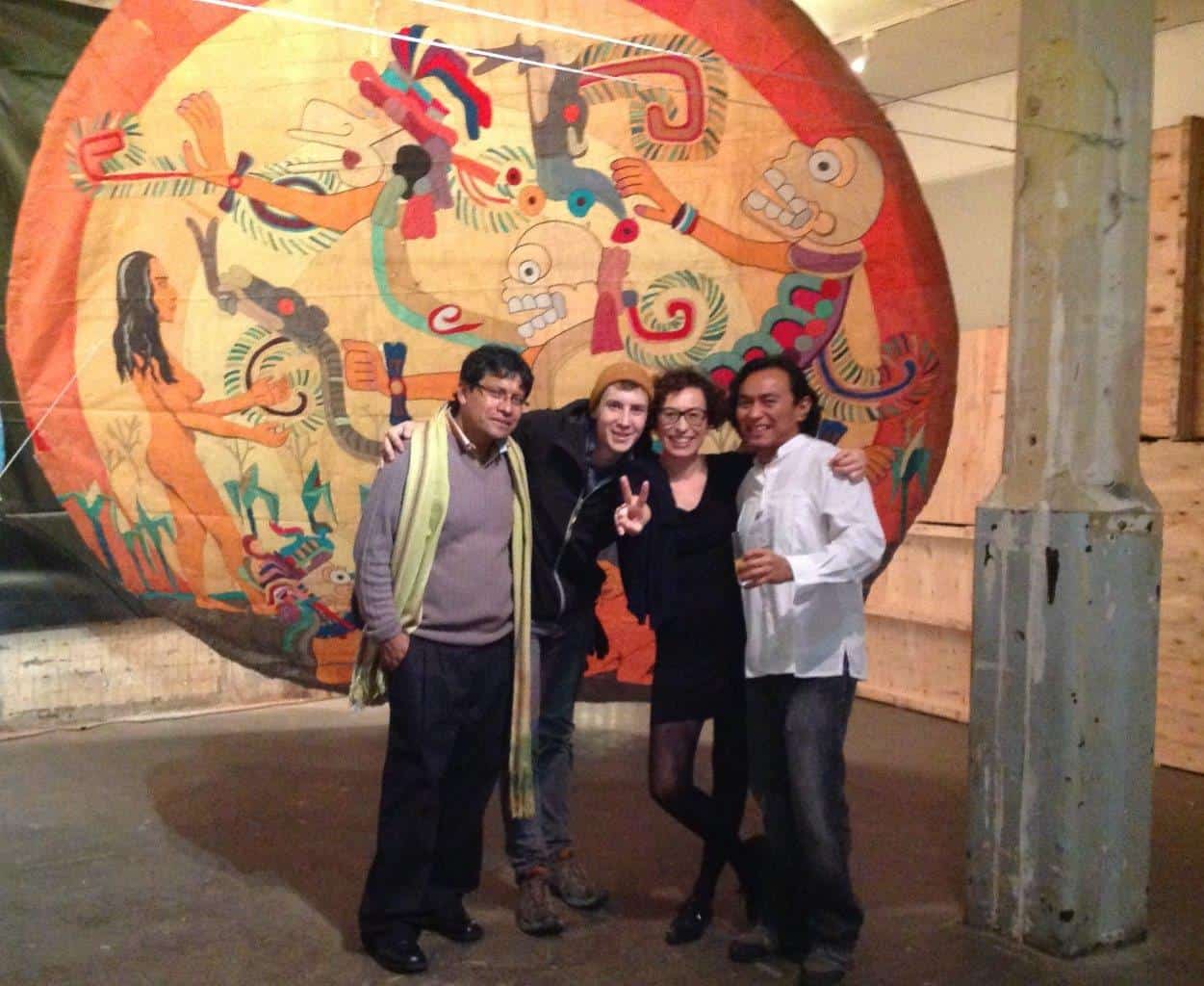
All photo credits: Ecocentrix


